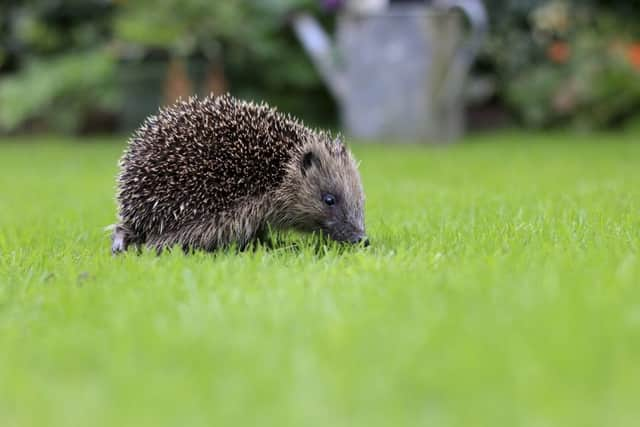Signs of summer's end in the garden


THE weather in September is often still summery and a lovely time of year to be out in your garden.
The signs of summer’s end are appearing in the landscape as the leaves start to turn brown and many plants yield their seeds in the familiar form of conkers and berries.
Advertisement
Hide AdAdvertisement
Hide AdMany summer migrant animals are beginning to depart and some winter migrants are starting to arrive.
Year round residents are preparing for the winter ahead by stockpiling food. The gradual transition of summer to autumn brings plenty of interest to a wildlife garden.
Mammals are still very visible in the garden.
Young wood mice, voles, foxes and badgers are still out exploring and learning necessary life skills and are best spotted in the evening.
Bats are still very active at this time.
British bat species are insect eaters so need flowering gardens to attract plenty of insects for them to eat.
Hedgehogs and badgers may be foraging for food at night.
Advertisement
Hide AdAdvertisement
Hide AdGood quality cat and dog food or raw minced meat makes great food for them.
You could construct a hedgehog hibernation box for later in the season, burying it under a pile of old leaves.
A small entrance hole of four to five sq inches, and a covered entrance tunnel will prevent foxes and other predators from raiding the nest.
Many summer migrant visiting birds begin their journey back home this month.
Advertisement
Hide AdAdvertisement
Hide AdSwifts and swallows are often the first to go, followed by willow-warblers, blackcaps and pied flycatchers.
House martins often stay a little later into late September/October.
A birdbath can be a vital source of drinking water for birds.
Ensure yours is kept topped up and the water is changed regularly and scrubbed out with mild detergent to help prevent the spread of disease.
Advertisement
Hide AdAdvertisement
Hide AdAvoid peanuts and large chunks when putting out bird food as large pieces could be fed to fledglings.
Safe foods include grated cheese, sultanas, oatmeal, apples and mealworms.
Catering to different feeding habits will maximise the numbers of different bird species visiting your garden.
Hanging feeders attract tits, finches and sparrows whilst bird tables attract robins, doves and bramblings.
Food scattered on the ground attracts blackbirds, thrushes and wrens.
Go to hiwwt.org.uk/wildlife-gardening.